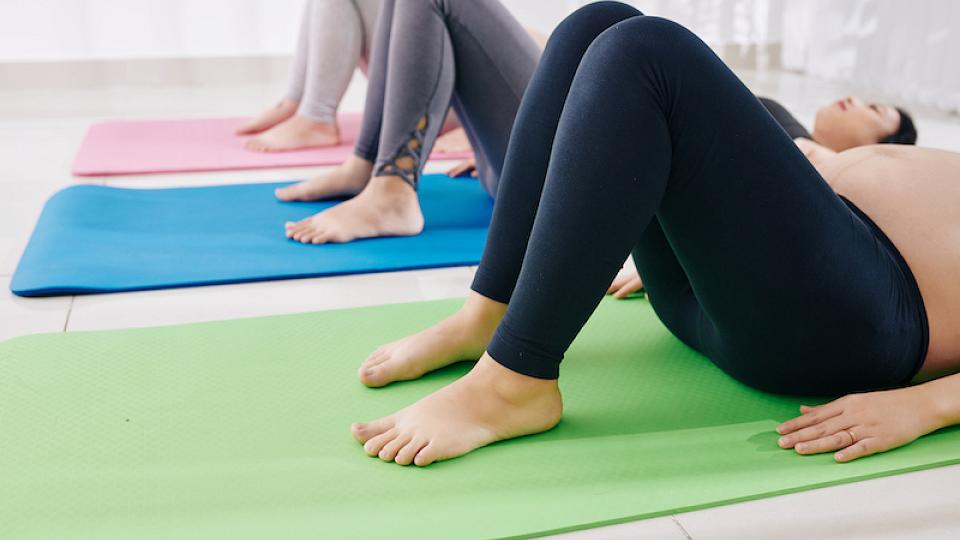
How to Battle the Post-Pregnancy Belly Bulge
After giving birth, it takes some time for certain body parts to return back to place. For many women, it could take several months to get rid of that stubborn belly bulge due to a condition called diastasis recti. This happens when the stretching causes both sides of the abdominal muscles (rectus abdominis or “six-pack”) to separate, resulting in a gap, bulge, or hollow space along the midline of the belly.
“Carrying a baby puts a lot of pressure on the abdominal muscles, and it's very common to have some degree of diastasis recti,” says Leslie Valte, PT, DPT, a pelvic health physical therapist at University of Utah Health. “Although it's not something you can prevent, it's a very normal condition for women during their third trimester and after delivery, and the muscles will come back together over time."
If the belly bulge doesn’t resolve on its own after a few months, it’s time to talk to your doctor about physical therapy so you can avoid health complications caused by a weakened core, such as back pain and hernia.
How Can I Get My Belly Back in Shape?
Core exercise is the best medicine for diastasis recti. Valte recommends doing strength-training exercises (planks, Pilates, etc.) before pregnancy and more targeted abdominal exercises during pregnancy. But before rolling out the yoga mat, she advises all patients—no matter their fitness level—to follow their prescribed treatment plan to prevent any setbacks.
"I caution all women to be careful with their exercises because they could delay their progress by doing the wrong types of ab workouts,” Valte says.
There are, however, some floor exercises you can do at home that won't exacerbate the problem. Valte recommends these gentle exercises for treating diastasis recti.
- Supine Transversus Abdominis Bracing: Lie on your back with your knees bent, feet resting on the floor, and your fingers resting on your stomach just above your hip bones. Tighten your abdominal muscles, pulling your navel in toward your spine and up. Hold this position, then relax and repeat.
- Supine Transversus Abdominis: Lie on your back with your knees bent, feet resting on the floor, and your fingers resting on your stomach just above your hip bones. Tighten your abdominal muscles, pulling your navel in toward your spine and up. Hold this position, then slide one heel away from your body. Bring it back to the starting position and repeat with your other leg.
- Supine Transverse Abdominis Bracing with Marches: Lie on your back with your arms resting at your sides, your knees bent and feet flat on the ground. Tighten your abdominal muscles and slowly raise one of your legs off the floor, keeping your knee bent. Then return to the starting position and repeat with your other leg.
Note: While exercising, stop immediately if you see signs of “doming," in which the stomach forms a tent-like shape.
When Will I See the Results?
Because each case of diastasis recti is different, the length of recovery time varies for everyone. It can take anywhere between two months to a year. In rare cases, surgery is necessary for those who aren’t responding to physical therapy.
"For most patients, the abdominal muscles will eventually come together with targeted core exercises,” Valte says. “So, you just need to be patient and wait for nature to take its course."
No matter how badly you want to fit back into your favorite pair of jeans, remember that patience is key to recovery. Stick to your treatment plan—and hold off on those boot camp workouts—to get your belly back into pre-baby shape.


